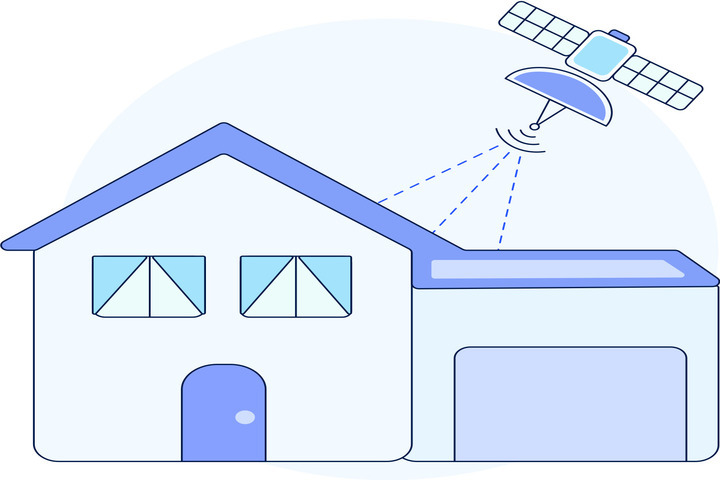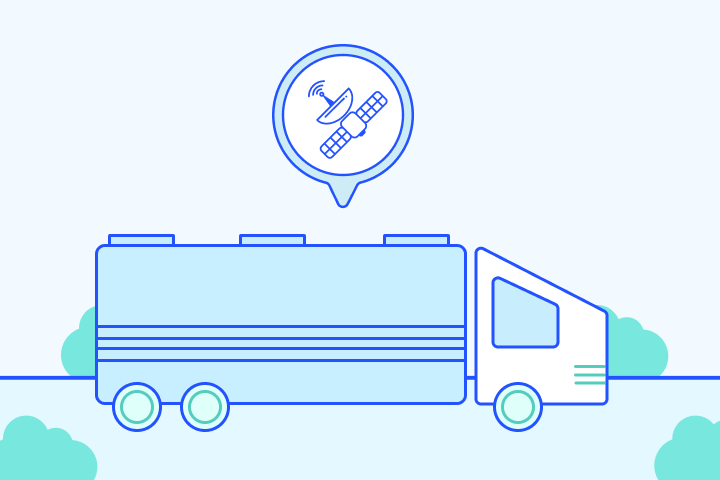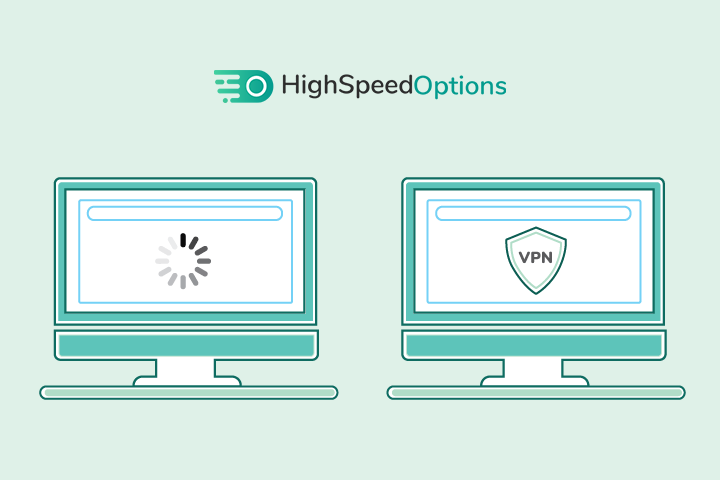Starlink Satellite Internet Service for RVs

HighSpeedOptions prides itself on providing honest, quality content. While we may be compensated when you make a purchase through links on our site, all opinions are our own. Here's how we make money.
Table of Contents
If you travel by RV, camper, or live a nomadic lifestyle, traditional internet providers may not meet your connectivity needs. Starlink’s Roam satellite internet is designed for frequent travelers. This article walks you through what Roam is, its costs, the trade-offs, and how it compares to alternatives — so you can decide whether it fits your lifestyle.
What Is Starlink Roam and How Does it Work?
“Roam” is Starlink’s satellite internet service built for mobile users: RVers, campers, and those who want internet while traveling. It supports:
- In-motion use — meaning you can have internet connectivity while your RV is moving.
- Standby/pause mode — you can temporarily suspend service during downtime, such as off-grid stays.
- Countrywide & international travel (within Starlink’s “live markets”) — depending on the plan, you can roam across the country, and some limits on international roaming.
Starlink Roam Cost & Plan Options (2025)
Here are the current plan tiers, prices, and hardware costs:
| Plan | Monthly Cost | Data Cap / Unlimited | Key Features |
| Roam 50 GB | US$50/month | 50 GB high-speed, then slower speeds or additional charges depending on plan terms. | Best for infrequent travel or light users. |
| Roam Unlimited | US$165/month | Unlimited high-speed data (or a very large allowance before deprioritization–slower speeds during congestion). | Better for full-time RVers, streaming, and remote work. |
| Plan | Roam 50 GB |
| Monthly Cost | US$50/month |
| Data Cap / Unlimited | 50 GB high-speed, then slower speeds or additional charges depending on plan terms. |
| Key Features | Best for infrequent travel or light users. |
| Plan | Roam Unlimited |
| Monthly Cost | US$165/month |
| Data Cap / Unlimited | Unlimited high-speed data (or a very large allowance before deprioritizationâslower speeds during congestion). |
| Key Features | Better for full-time RVers, streaming, and remote work. |
What Are The Limitations Of Starlink Roam For RVs?
While Starlink Roam is a strong option for RV internet, it comes with a few important limitations that RVers should understand before signing up. The questions below cover the most common concerns about performance, reliability, and equipment needs.
How fast is Starlink Roam for RVs?
Download speeds usually range from 30–100 Mbps, sometimes higher in uncongested areas. Upload speeds are lower (around 5–15 Mbps), which is fine for video calls but less consistent during peak hours.
What is deprioritization with Starlink Roam?
Starlink Roam users do not get the same network priority as fixed-address residential users. In crowded areas, speeds may slow because Roam traffic is deprioritized.
Does Starlink Roam work while driving?
Yes. Starlink supports in-motion use when the dish is properly mounted. Speeds are usable on the road, but tunnels, tree cover, and tall buildings can cause short dropouts.
Does weather affect Starlink Roam?
Yes. Like all satellite internet, heavy rain, snow buildup, or dense clouds can reduce signal quality. Starlink dishes have built-in heaters to help melt snow and ice.
How much power does Starlink Roam use?
The standard Starlink dish typically draws 50–75 watts of power. RVers often rely on solar, generators, or RV battery systems to keep it running.
Do I need special equipment to use Starlink Roam on an RV?
A stable mount improves performance, especially in motion. Many RVers use roof mounts, tripods, or portable stands. You’ll also need space to safely store the dish when not in use.

How Is Starlink Roam Different from Older Portability Options?
Earlier Starlink offerings included a “portability” add-on or “RV for residential users” which had different trade-offs. Now:
- Plans like Roam are designed from the ground up for mobile use, including in-motion support.
- The “portability” add-on model has largely been replaced or folded into these new mobile/Roam services.
Are There Alternatives To Starlink Roam?
If Starlink Roam doesn’t seem like the solution for you, here are some alternatives:
- Cellular / 5G: An option where available; faster latency, smaller hardware. But coverage drops off in remote areas. Many RV users combine a cellular backup with satellite for redundancy.
- Hybrid setups: Solar panels, battery power, and multiple internet sources help mitigate limitations (power, signal obstruction, etc.).
- Other Satellite Providers: Viasat, HughesNet, and others still offer coverage in very remote areas. But typical downsides include higher latency, lower upload speeds, data caps, and less flexibility in mobility.
Viasat
How fast is Viasat internet?
Viasat offers satellite internet plans with speeds up to 100–150 Mbps, depending on location.
Does Viasat work in RVs?
Viasat is designed for fixed locations, not in-motion use. It’s best for rural homes or parked RVs.
How does Viasat compare to Starlink?
Viasat is more widely available in rural areas but has higher latency and does not offer in-motion support. Starlink offers lower latency and mobile use, making it better for RV travel.
Pros
Easy installation
Unlimited data
Fast speeds, even in remote areas
Cons
Prices can increase after the introductory period
Upload speeds are lower than downloads
HughesNet
How fast is HughesNet internet?
HughesNet Gen5 delivers download speeds up to 25 Mbps, with video data optimized to conserve bandwidth.
Does HughesNet work in RVs?
Like Viasat, HughesNet is built for fixed locations. It works when parked, but not while driving.
How does HughesNet compare to Starlink?
HughesNet is cheaper upfront and has predictable pricing, but it’s much slower and less flexible. Starlink is stronger for RVers who need higher speeds and mobility.
Pros
No hard data limits (though speeds may slow after data allowance)
Built-in Wi-Fi for better coverage
Video data optimized so it doesn’t quickly use up high-speed data
Cons
Lower overall speeds than Viasat or Starlink
Requires a multi-year contract
Comparison Table: Starlink Roam vs Viasat vs HughesNet
| Feature | Starlink Roam | Viasat | HughesNet |
| Download Speeds | 30–100 Mbps (sometimes higher) | Up to 100–150 Mbps | Up to 25 Mbps |
| Latency | Low (~40–60 ms) | High (600+ ms) | High (600+ ms) |
| In-Motion Use | Yes, with proper mount | No | No |
| Data Policy | Unlimited; speeds may slow in congestion | Large allowance; speeds may slow when exceeded | Priority data caps; speeds may slow when exceeded |
| Contracts | Month-to-month | Often 2 years | 2-year contract |
| Typical Monthly Cost | $50–$165 | $50–$120 | $40–$95 |
| Best For | RVers needing mobility & low latency | Rural homes that need speed | Budget users with light needs |
| Verdict | Best for travelers & RV use | Best for fixed rural internet | Best for basic, low-cost access |
| Feature | Download Speeds |
| Starlink Roam | 30â100 Mbps (sometimes higher) |
| Viasat | Up to 100â150 Mbps |
| HughesNet | Up to 25 Mbps |
| Feature | Latency |
| Starlink Roam | Low (~40â60 ms) |
| Viasat | High (600+ ms) |
| HughesNet | High (600+ ms) |
| Feature | In-Motion Use |
| Starlink Roam | Yes, with proper mount |
| Viasat | No |
| HughesNet | No |
| Feature | Data Policy |
| Starlink Roam | Unlimited; speeds may slow in congestion |
| Viasat | Large allowance; speeds may slow when exceeded |
| HughesNet | Priority data caps; speeds may slow when exceeded |
| Feature | Contracts |
| Starlink Roam | Month-to-month |
| Viasat | Often 2 years |
| HughesNet | 2-year contract |
| Feature | Typical Monthly Cost |
| Starlink Roam | $50â$165 |
| Viasat | $50â$120 |
| HughesNet | $40â$95 |
| Feature | Best For |
| Starlink Roam | RVers needing mobility & low latency |
| Viasat | Rural homes that need speed |
| HughesNet | Budget users with light needs |
| Feature | Verdict |
| Starlink Roam | Best for travelers & RV use |
| Viasat | Best for fixed rural internet |
| HughesNet | Best for basic, low-cost access |
Is Starlink Roam Right for You?
Here are some questions to consider:
- How often will you be moving? If you’re parked most nights, the Unlimited plan may be worth the extra cost.
- Do you need fast upload speeds for video calls or work? If yes, verify the plan’s upload speeds.
- How important is performance during peak usage times? If you often stay in populated areas (campgrounds, suburbs), deprioritization may affect your experience.
- Can you provide stable mounting and power for the dish? Without stable power and a good line of sight, performance may degrade sharply.
Starlink Roam Satellite Internet: Reliable Internet on the Road
Starlink Roam has become the go-to mobile internet option for RVs, campers, and digital nomads. For light/occasional users, the 50 GB plan offers a good entry point; for regular use, the Unlimited plan brings more fluid performance. Just be prepared for trade-offs: power demands, signal obstruction, and network prioritization affect what you actually get. But overall, it’s a strong offering for mobile lifestyles in 2025.
Bottom Line: Is Starlink Roam Worth It for RVers?
Starlink Roam is the best satellite internet option for RV travelers who need mobility and lower latency than traditional providers. It isn’t perfect — power draw, congestion, and weather can impact performance — but for most RVers, the benefits outweigh the trade-offs.
FAQs About Starlink Roam RV Satellite Internet
Starlink Roam is a mobile version of satellite internet for RVs and travelers. Unlike residential service, it supports multiple locations and in-motion use but may be throttled in congested areas.
Plans start at $50/month for 50 GB and $165/month for unlimited data, with a one-time hardware cost of about $599. Prices may vary by region.
Yes, Starlink can work in motion with proper mounting, but tunnels, trees, and terrain may cause brief dropouts.
Yes, Starlink is generally the best option for RVs due to faster speeds and mobility, though congestion and power needs are drawbacks.
You’ll need a Starlink dish, router, power supply, and mount. Many RVers use roof mounts or tripods; lighter “Mini” hardware is also available.
Yes, Starlink lets you pause and resume service, making it cost-effective for part-time RVers.
Mount the dish, connect the hardware, align with the Starlink app, and ensure a clear sky view. Setup takes minutes but requires stable power.
Yes, Starlink Roam is an ideal internet option for truckers, provided the dish is securely mounted.
Speeds average 30–100 Mbps down and 5–15 Mbps up, with latency around 40–60 ms. Service may drop briefly under obstructions.
Yes, but performance may slow in congested areas. Check the Starlink coverage map before ordering.

















